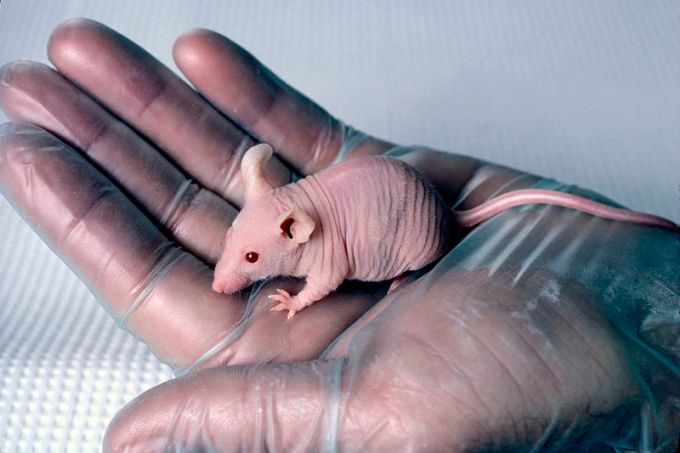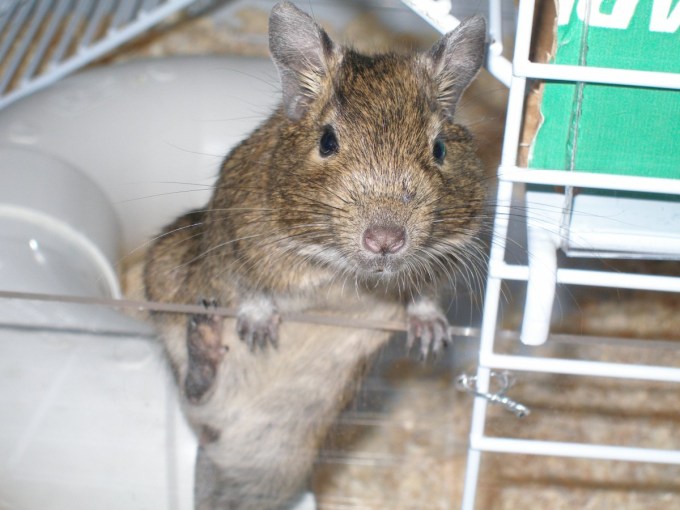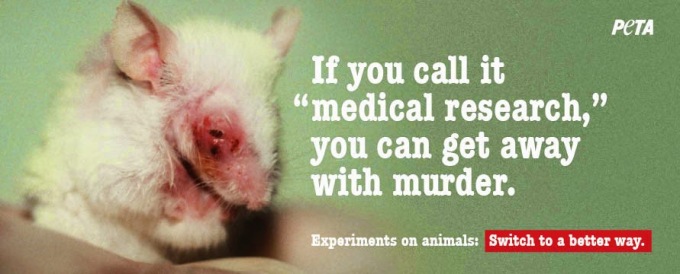
In 2015 a total of 4.14 million animal procedures were conducted, a considerable rise on the previous year. The government have committed to ‘replace, reduce and refine’ the use of animals in testing. Yet the figures are rising…
by Megan Packer
In laboratories throughout the UK, millions of animals are used for medical research. Primates are pinned down and experimented on so that scientists can understand their reactions to potential pharmaceutical medication. Mice are injected with symptoms of human illness and tested on for a cure and rats are experimented on as models of depression and anxiety. These creatures are placed at the forefront of vivisection. But why? Is it because of beneficial medical advances, or is it that they lack the ability to speak for themselves?
International institutions ignore the screams of primates when they pin them down for psychological testing. Monkeys are confined to tiny cages and purposely frightened with loud noises. People for the Ethical Treatment of Animals (PETA) present these shocking visuals in their campaign videos to make the public aware of the distressing conditions these animals are forced to endure. This method of exposure is often shocking to its audiences, however vivisection supporters choose to ignore this and rather highlight the human benefits instead.
Video: PETA
A background of scientific education could contribute towards making an informed decision on the topic of vivisection. The testing procedures would be easier to understand with an experimental knowledge. However, the debate ultimately relies on an individual belief: does the benefit outweigh the risk? Richard Scrase, Head of Online Communications at Understanding Animal Research believes that scientific knowledge is not an influential factor when making a decision.
“While a scientific training might sharpen people’s perspectives, I don’t think that it helps in weighing up the ethical balance of human benefit versus animal harm,” he explains. For some, no amount of medical evidence will change their views on the animal rights debate. Scrase admits that although he would respect an individual’s decision to favour animal welfare over medical advances, he would never agree with it because he believes the human advances are more important.
The use of animals in testing has not only contributed towards medical advances for humanity, it has also helped scientists to understand veterinary illness. Drugs have been created that have proven to be successful for both humans and animals. “Often the same diseases are treated and understood through the same process,” clarifies Tom Holder, Director of Speaking of Research. Canines that suffer from diabetes are injected with the same insulin that is provided to humans. If animal tests were never conducted, then the link may have never been discovered and a cure for diabetes in dogs may have never been found.
It is often assumed that animal experiments are unethical and cruel. The thought of innocent creatures being locked in cages and forced to experience pain is hard to rationalise. However, because of animal research, conditions that affect a large number of the population are now better understood. For example, rats are frequently used in studies of asthma, a condition that kills approximately three people every day in the UK. If vivisection were to be made illegal it would become much more difficult to develop cures for illness. Animal testing allows the medication to be tried on a living organism and so without these tests, the drugs would not make it to human trials. “If we remove the animal, we make the people the guinea pigs,” explains Holder.

Clinical Research Technician, Alicia Cox, works in the first phase of clinical trials. She dispenses potential new drugs to healthy, human volunteers. This stage is crucial as it determines whether or not the medication is safe enough to progress to further testing phases. Cox supports the use of animals in testing because she says that without it, drugs would never be tried on humanity and potential medical advances may never be discovered. “I believe that as long as their pre-existing life prior to the laboratory is humane, then it is fair for the testing to proceed.”
At the end of an experiment sequence, animals are often put down because of the risk of infecting other animals with disease. Some species do live out their expected life span in laboratory, but they have little or no quality of life. Dr Dan Lyons, CEO at the Centre for Animals and Social Justice (CASJ), explains that both the animals and the experimenter are aware of the pain that the subject experiences. “Scientists use rats and mice for models of human anxiety and depression, which indicates that they believe those animals’ mental states are broadly similar to ours,” says Lyons.
The employees at PETA dedicate themselves to campaign for animal exploitation to become illegal. Sonul Badiani-Hamment, Campaigns Assistant at PETA protests that to imprison creatures, deny them of their freedom and inflict conditions of pain is a cruel act. “No animal whether they are a monkey, dog or mouse deserves to be locked in a cage and subjected to abuse and suffering that would be illegal if it took place elsewhere.” Animals experience pain, but if they are taken from their natural habitat against their will, they are not able to understand why it is happening and if it is going to end.

The human anatomy is a complex system, therefore there is no guarantee that drugs will not cause further risk when consumed by humanity. According to Kathy Archibald, Director of Safer Medicines Trust, there is only a 5% chance that a drug presenting positive results in animals, will be successful when applied to humans. “Research has shown that animals present fewer than half of the side effects that occur once a drug is tried on people.” describes Archibald.
Animal studies are therefore considered by many, to be a poor model to use in medical research. The results have the potential to mislead scientists in their findings. If animals do not present even half of the side effects that we do, then what is it to say the new symptoms will not be life threatening? If an animal reacts to a potential drug, it will not make it as far as human trials. This could hinder research developments as there is no chance of knowing if it would have been successful if tried on humankind. Therefore, there may have been occasions in which the cure for some of our deadliest diseases were disposed of because of animal reactions.
“Scientists have built their career around the use of animals in medical research.”
Understanding Animal Research claim that humans and mice have 98% genetic similarities. However, according to Dr Richard Klausner the history behind finding a cure for cancer has largely involved injecting mice with the disease and then experimenting to find a result. Cancer in mice has long been cured, but humans are still dying of the disease. Jessamy Korotoga, Anti-Vivisection Campaign Manager at Animal Aid says that this is a prime example of how animal studies have in fact misled scientists instead of helping them. “The trouble is, the animal’s disease is never exactly the same as the real human version and, more importantly, the cause is not the same – so a cure for the animal is not likely to work in humans.”
A method of ensuring the safety of trial medication could be to introduce human relevant systems more often, as opposed to animal models. Extracting tissue from volunteers and testing it to understand reactions to medication would provide much more reliable results. Testing it on a model that is not the same species is much more difficult. Holder explains that the process of producing and developing new pharmaceuticals is one that is incredibly slow. “It takes an average of 15 years before an animal tested drug is approved for human trials.”
Korotoga believes that the reason animal studies are still the favoured approach is because scientists have built their career around the use of animals in medical research. Human systems are relatively new methods and are not as well understood. “The more that scientists use new methods, and the more that new professionals are trained with them, the more likely it will be that they become the popular option,” she says.
The decision to support or disagree with vivisection resides with an individual’s moral opinion and if they believe it is justified or not. In the eyes of the law, animals do not have the same rights that we do. That does not mean that it is fair to subject them to conditions that we would object to if the law was not in our favour. If we are so genetically similar to rodents and primates, then why is it considered ethical to use them at our disposal but unethical to replace animals with the use of humans? If scientists believe in our genetic comparisons, then surely they would agree that what is beneficial for us, should be beneficial for animals. At least 98% of the time…
You must be logged in to post a comment.